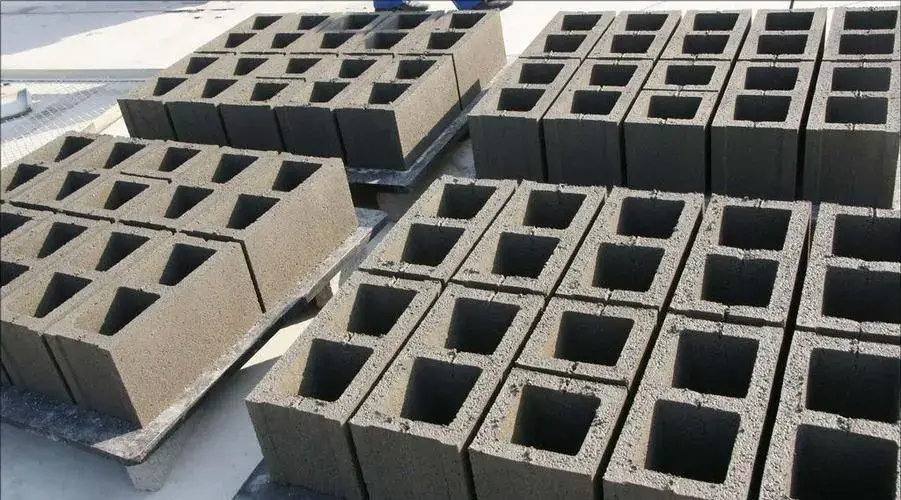Hollow blocks and concrete solid blocks have emerged as indispensable components in modern construction due to their versatility, cost-effectiveness, and durability. These building materials, designed to suit various construction needs, offer unique benefits for architects, engineers, and builders. This article explores the advantages, applications, and considerations of using hollow block and concrete solid blocks in construction projects.
What Are Hollow Blocks and Concrete Solid Blocks?
- Hollow Blocks: These are precast units with one or more hollow cavities. Typically made of cement, sand, and aggregates, hollow blocks are lightweight and provide thermal and acoustic insulation.
- Concrete Solid Blocks: Unlike hollow blocks, concrete solid blocks are dense and solid throughout. They are known for their superior strength and load-bearing capacity, making them suitable for heavy-duty construction.
Types of Blocks
- Concrete Hollow Blocks
These blocks are the most commonly used type of hollow blocks and are known for their structural efficiency. - Concrete Solid Blocks
Designed for high-strength applications, concrete solid blocks are often used in foundations, load-bearing walls, and pavements. - Lightweight Hollow Blocks
Made from lightweight aggregates, these blocks are ideal for reducing structural weight. - Aerated Concrete Blocks
These blocks are lightweight and provide excellent thermal insulation.
Advantages of Hollow Blocks and Concrete Solid Blocks
- Cost-Effective Construction
Both hollow blocks and concrete solid blocks reduce material costs. While hollow blocks use less material, solid blocks provide strength without additional reinforcements. - Structural Strength
Concrete solid blocks excel in applications requiring high compressive strength, whereas hollow blocks are sufficient for non-load-bearing walls. - Thermal and Acoustic Insulation
Hollow blocks offer better insulation due to their cavities, while concrete solid block enhance the structural integrity of the building. - Durability and Longevity
Both types of blocks are resistant to weather conditions, pests, and fire, ensuring long-lasting performance. - Versatility
The combination of hollow blocks and concrete solid blocks allows for flexibility in construction, catering to diverse architectural needs.
Applications of Hollow Blocks and Concrete Solid Blocks
- Residential Buildings
Hollow blocks are ideal for partition walls, while concrete solid blocks are used in load-bearing walls and foundations. - Commercial Structures
High-strength concrete solid blocks provide stability for multi-story commercial buildings, while hollow blocks are suitable for partitions and facades. - Boundary Walls and Fences
Lightweight hollow blocks offer cost-effective solutions for boundary walls, and concrete solid blocks add durability. - Infrastructure Projects
Bridges, culverts, and retaining walls often use concrete solid blocks for their strength and reliability.
Limitations
- Weight of Concrete Solid Blocks
Concrete solid blocks are heavier than hollow blocks, which can increase transportation and labor costs. - Moisture Absorption
Both types of blocks can absorb moisture if not properly treated, leading to potential dampness issues. - Specialized Skills Required
Construction with hollow blocks and concrete solid blocks may require skilled labor for proper alignment and finishing.
Tips for Using Hollow Blocks and Concrete Solid Blocks
- Choose the Right Type: For lightweight and insulated walls, go for hollow blocks. For heavy-duty applications, opt for concrete solid blocks.
- Ensure Proper Curing: Proper curing is essential to maximize the strength and durability of both block types.
- Source Quality Materials: Always use blocks from reputable manufacturers to ensure consistent quality.
The Future of Hollow Blocks and Concrete Solid Blocks
As sustainability and efficiency take center stage in construction, both hollow blocks and concrete solid blocks are evolving with innovative features. From self-healing materials to blocks with enhanced insulation, these advancements promise to revolutionize the industry.
Conclusion
Hollow blocks and concrete solid blocks are essential for modern construction, offering a balance between cost, strength, and sustainability. Whether used individually or in combination, they cater to diverse structural needs, making them a preferred choice for projects ranging from residential homes to large infrastructure. Builders and architects can leverage these blocks to create durable, efficient, and environmentally friendly structures.
